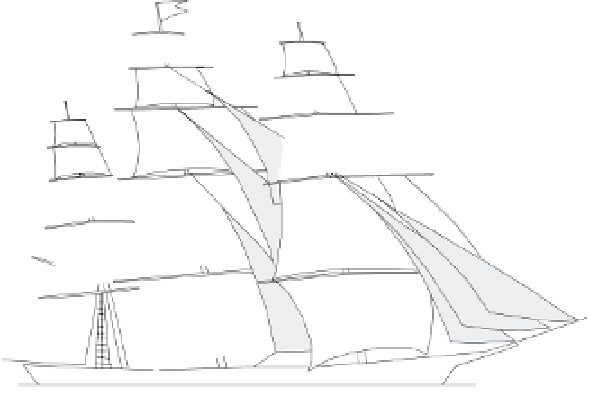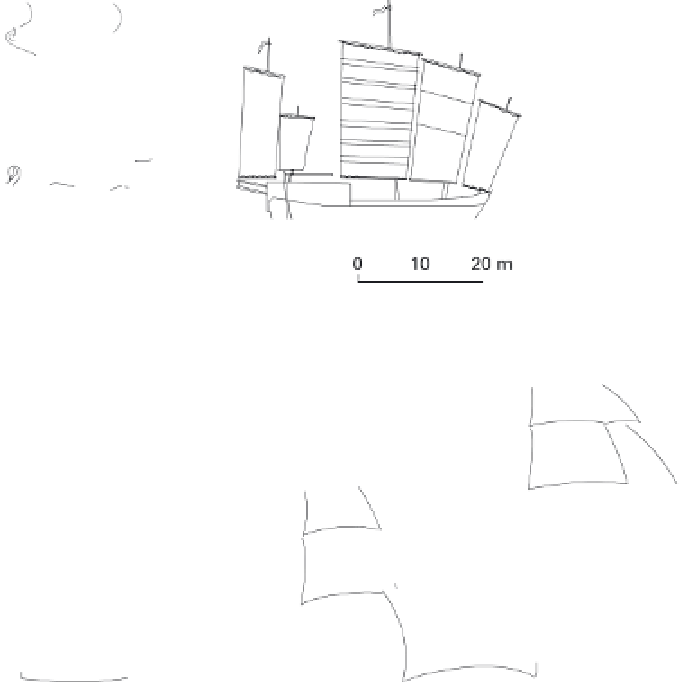Environmental Engineering Reference
In-Depth Information
7.12
Evolution of sailing ships, 1600
B
.
C
.
E
-1851. From Smil
(1994).
of Good Hope and crossed the Indian Ocean to India;
and in 1519, Magellan traversed the Pacific and the Vic-
toria (captained by Sebastian Elkano) completed the first
circumnavigation of the world. European expansion and
the rising maritime trade followed as accurate guns turned
larger ships into powerful tools of long-distance conquest
(McNeill 1989). These compact devices allowed rela-
tively small crews to deploy unprecedented amounts of
inanimate energy to roam and to destroy, and in doing
so advanced Europe's global ascendance (Cipolla 1966).
But comparisons of record tonnages do not show any
huge gains between antiquity and the late medieval and
early modern eras (fig. 7.12). Ships with capacities in
excess of 1000 t had been built already by the Romans,
but a common Roman cargo vessel carried less than
100 t, voyages of great European discoveries started



























